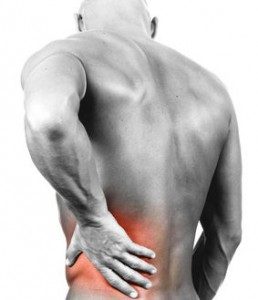Chiropractic Health Services
Chiropractors are primary contact health care providers, which means you do not have to be referred to a Chiropractor by a physician or another health care provider. Chiropractors are trained in the Neuromusculoskeletal (NMS) system and their aim is to diagnose and treat disorders of the spine and/or other joints of the body. They provide conservative management of NMS disorders including, but not limited to head, neck and back pain (over 90% of conditions treated).
How is the chiropractic adjustment performed?
The Chiropractor typically uses his/her hands to manipulate the joints of the body, particularly the spine, in order to reduce pain, and restore or enhance joint function. The chiropractic adjustment or manipulation is a high frequency, low amplitude manual procedure that utilizes the highly refined skills developed during four intensive years of chiropractic education.
If a patient is uncomfortable with hands-on adjusting – the Activator© technique can be considered as an alternative form of therapy.
Why is there a popping sound when a joint is adjusted?
The “popping” sound you may sometimes hear during an adjustment is the result of gas; it is exactly the same as when you “crack your knuckles.” It’s not painful – it is caused by the change of pressure within the joint. This relieves the pressure on the joint, surrounding nerves and muscles, and most importantly restores normal mobility. Without normal mobility, other parts of your body are forced to compensate putting them under stresses they may not be anatomically and/or biomechanically prepared to endure.
Once I start chiropractic, do I need to come for life – why is spinal health important?
Typically acute pain is what brings patients to seek care from a Chiropractor. However, chiropractic care is analogous to patient care by a Dentist. Do we visit the Dentist only once we have a cavity? Do we go only when we have oral pain? Typically – no. This is why spinal health through Chiropractic is so important. We want to prevent the onset of pain and dysfunction. Once a patient has pain, it’s because they have allowed for a sufficient amount of dysfunction to accumulate. For some people, chiropractic treatment is like a regular tune-up for their back, to help deal with the daily wear and tear of life.
Is chiropractic appropriate for newborns, infants and children?
The birthing process can be comfortable for both mother and baby, but sometimes the process can be very traumatic. Depending on the delivery process – whether or not instruments are used to help deliver the baby or if the baby is injured along the course of the delivery, babies can be left with minor to major neuromusculoskeletal injuries to the head, neck, mid-back, low back, hips, etc. These injuries can result in growth abnormalities and/or pain. Common challenges with newborns and infants are constipation, feeding difficulties and colic – chiropractic can be an appropriate conservative mode of therapy.
Children are very physically active and experience many types of falls and blows from activities of daily living, as well as from participating in sports. Injuries such as these may cause many symptoms including back and neck pain, stiffness, soreness or discomfort.
Is chiropractic appropriate for expecting mothers?
Depending on each circumstance, chiropractic care can be very relieving for expecting mothers experiencing low back pain, or pain related to the great expectations placed on their body during the 9 months.
Does chiropractic treatment require x-rays?
X-rays can play an important role in diagnosis and are taken when a need has been determined after taking a patient case history and conducting a physical examination.
Interesting Facts
- 8/10 Canadians will experience back pain at some point in their life
- Back pain will often go away on its own after two to six months, however without proper rehabilitation it will most likely recur in 80% of cases
- One of the reasons back pain is so common is that it can be caused by so many different things:
- Works, sports, poor posture, stress, car accidents, improper lifting
- Back pain warning signs:
- Leg pain with numbness, tingling and/or weakness
- Back pain with coughing or sneezing
- Difficulty standing up after sitting for a long period of time
- Stiffness in the morning
- Pain in your hip, buttock, thigh or knee
- Inability to turn or bend to each side equally
- Unbalanced posture
As a Brampton chiropractor, we also provide physiotherapy, clinical acupuncture, active release technique and registered massage therapy to help you heal.


